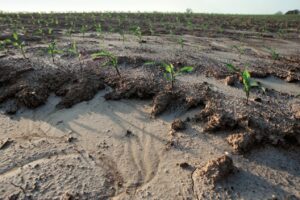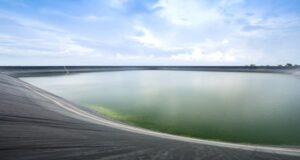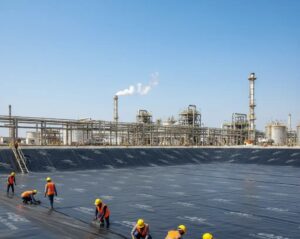Rockfall protection, Geosynthetics to the rescue
What are rockfalls?
Experience unrivaled rockfall protection with the remarkable power of Rockfall Netting. Discover how these innovative solutions can safeguard your projects.
Rockfalls comprise free or bounding fall of rocks and debris along slopes owing to gravitational force. It is a common occurrence along mountains and cliffs. They are typically initiated by weather changes, heavy rains, or natural processes such as landslides and earthquakes. Strong winds and storms can also cause trees and other vegetation to uproot, causing rockfalls. Rapid urbanization and cutting through mountainous slopes also trigger rockfall hazards.
The rocks once dislodged and set into motion, can be catastrophic. Unstable terrain, steep slopes, and gravity cause the stones to move along the slopes with great energy and impact. A chain reaction triggers other smaller rocks and debris along the path to tumble too.
The result is physical and economic risks. The threat to life and property is genuine. Also, frequently along transportation corridors, rockfalls cause substantial damage to infrastructure and impede transportation. Depending on the intensity, some routes have to face a shutdown, causing monetary loss and inconveniencing people.
Protection from the Hazard:
Rockfalls most often occur in rock-cut slopes. While it is impossible to predict the hazards, potential sites can be assessed and identified using the Rockfall Hazard Rating System. A proactive approach is better than reactive and remedial measures.
When the danger is real, it calls for active mitigation measures. In a preventive scenario, passive mitigation is sufficient.
Geosynthetics, which are invaluable in geotechnical engineering, is a savior when it comes to rockfall hazards. Geosynthetic rockfall mitigation comes in the form of drapery, mesh, and barriers. The mitigation measures have the properties of controlled energy dissipation, high energy absorption capacity, multi-impact systems, low-maintenance, high corrosion resistance, and a high level of certification.
The protection systems absorb the impact of the falling rocks and contain the rocks and debris such that it diminishes the danger to life and property.

Pic Cr: Google.
Rockfall Netting/Drapery:
The rockfall netting or drapery barriers consist of hexagonal double twisted mesh. It provides adequate protection for rocks varying from 18 inches to almost 2 feet in diameter.
The mesh or drapery often finds use in protecting railway tracks and other transport corridors. While strong enough to contain and withstand the force of falling rocks, it allows for free movement of the debris within. The double twist mesh is reliable and ensures the structure does not fall apart if one wire gets cut.
HEA Panels:
Then, there are the High Energy Absorption panels or HEA panels, which are made of single high-tensile wire with knots at junctions.
Barriers:
The rockfall barriers come preassembled and are designed to withstand high impact energy levels. They are the most functional of all and consist of steel columns and ropes anchors, bearing nets, and concrete foundations. Low anchor forces lower drilling time, thereby reducing overall installation cost. Delivery as preassembled mesh also significantly reduces the installation time.
The rockfall barriers pass stringent testing measures, vertical free fall. They are high-tensile steel wires. Not only are they maintenance-free post-installation, but they are cost-effective and reliable, protect the environment, and are almost invisible.
Ocean Geosynthetics, engineering innovative solutions
We coordinate with our clients, understand the project and its needs, and offer technical expertise accordingly. Tested, certified, and of the highest standards, our Geosynthetic rockfall protection solutions are durable, practical, environmentally-sound, and cost-effective.



